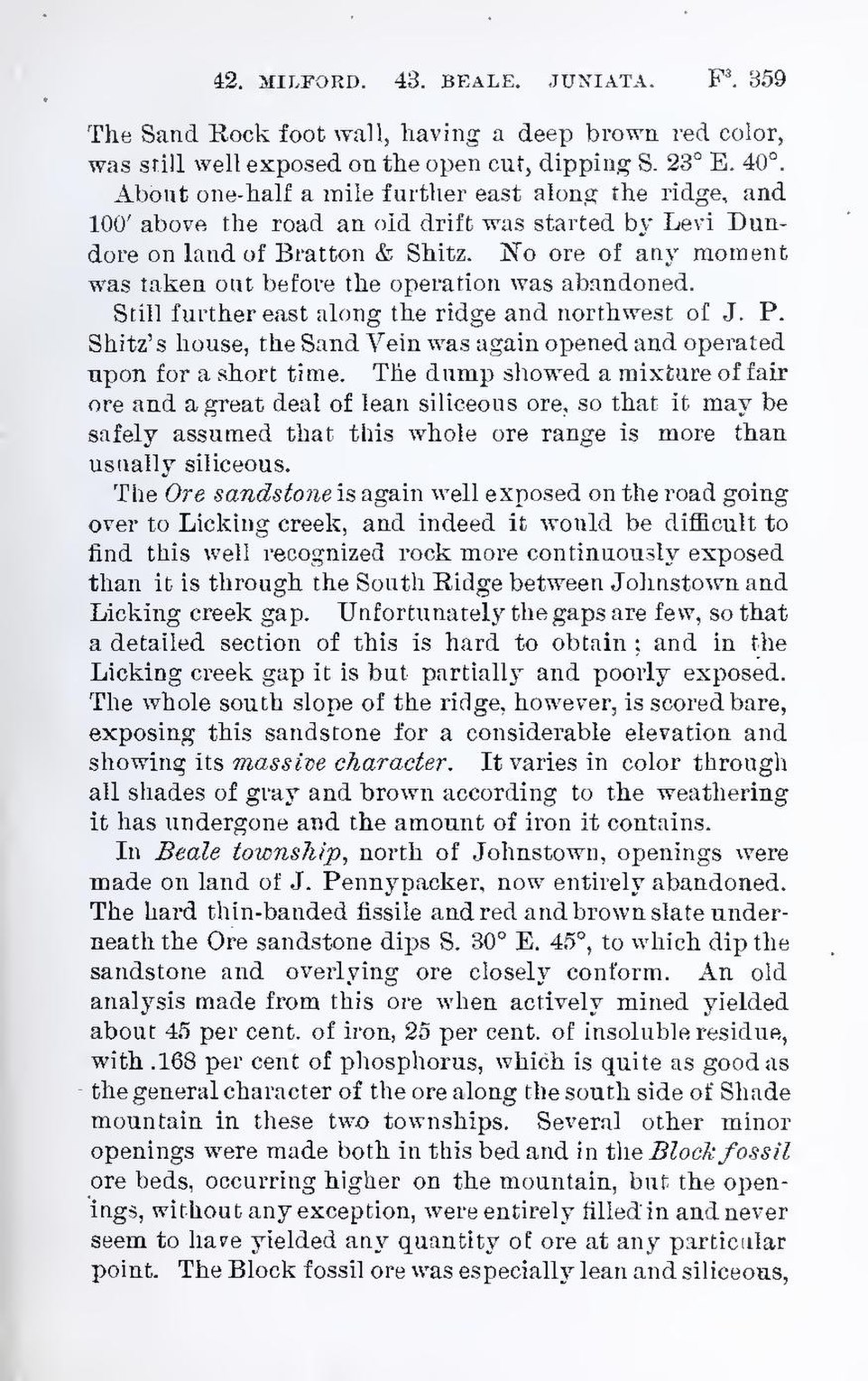The Sand Rock foot wall, having a deep brown red color, was still well exposed on the open cut, dipping S. 23° E. 40°.
About one-half a mile further east along the ridge, and 100′ above the road an old drift was started by Levi Dundore on land of Bratton & Shitz. No ore of any moment was taken out before the operation was abandoned.
Still further east along the ridge and northwest of J. P. Shitz’s house, the Sand Vein was again opened and operated upon for a short time. The dump showed a mixture of fair ore and a great deal of lean siliceous ore, so that it may be safely assumed that this whole ore range is more than usually siliceous.
The Ore sandstone is again well exposed on the road going over to Licking creek, and indeed it would be difficult to find this well recognized rock more continuously exposed than it is through the South Ridge between Johnstown and Licking creek gap. Unfortunately the gaps are few, so that a detailed section of this is hard to obtain; and in the Licking creek gap it is but partially and poorly exposed. The whole south slope of the ridge, however, is scored bare, exposing this sandstone for a considerable elevation and showing its massive character. It varies in color through all shades of gray and brown according to the weathering it has undergone and the amount of iron it contains.
In Beale township, north of Johnstown, openings were made on land of J. Pennypacker, now entirely abandoned. The hard thin-banded fissile and red and brown slate underneath the Ore sandstone dips S. 30° E. 45°, to which dip the sandstone and overlying ore closely conform. An old analysis made from this ore when actively mined yielded about 45 per cent. of iron, 25 per cent. of insoluble residue, with .168 per cent of phosphorus, which is quite as good as the general character of the ore along the south side of Shade mountain in these two townships. Several other minor openings were made both in this bed and in the Block fossil ore beds, occurring higher on the mountain, but the openings, without any exception, were entirely filled in and never seem to have yielded any quantity of ore at any particular point. The Block fossil ore was especially lean and siliceous,
